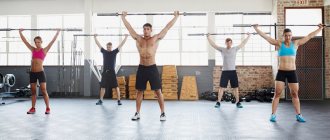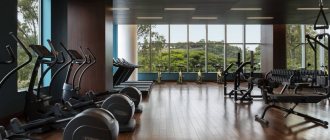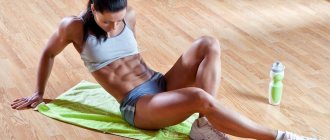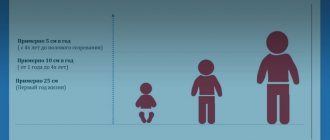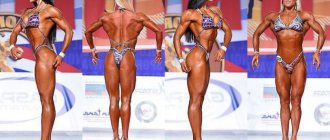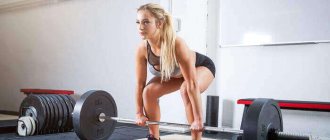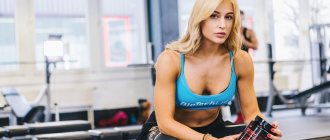In the summer, even the laziest person begins to increase physical activity. Unfortunately, the usual rhythm of life does not allow you to devote enough time to training. We asked answers to the most pressing questions about doing exercises and attending fitness classes to Stanislav Zainilov, Honored Master of Sports in bodybuilding and fitness, Master of Sports in Sambo and hand-to-hand combat, manager of the Olympus fitness club in St. Petersburg and a fitness expert Siberian Health Corporation. So, the most popular questions for a fitness trainer and their answers.
Is it worth taking vitamins in tablets or capsules in the summer? Or do you have enough vitamins from vegetables and fruits?
During exercise, not only liquid is lost along with sweat, but also vitamins and microelements. The body is not able to compensate for their deficiency on its own (with the exception of fat-soluble vitamins). To rehabilitate the vitamin-mineral balance with food, you should eat a large amount of fruits and vegetables, so it’s better to switch to properly selected mineral-vitamin complexes. They prevent fat from accumulating and strengthen the immune and nervous systems. Useful substances in combination affect the regeneration of connective tissue, improve the appearance of hair, nails, and skin.
Cardio loads
Allows you to understand whether your heart and blood vessels are ready for stress.
Step test. In fitness rooms it is carried out under a metronome on a step platform, but a stair step is also quite suitable for these purposes. We stand facing it and begin the movement, keeping the pace of 1 step -1 second: Place your right foot on the step, two - place the second one, three - step back with your right foot, four - step back with your left. Continue doing this for 3 minutes. After three minutes, stop and immediately take your pulse, then rest for one minute and take your pulse again.
Evaluation of results:
Women
| Grade | Age | ||||
| 18-25 | 26-35 | 36-45 | 46-55 | 56+ | |
| Great | up to 85* | up to 88 | up to 90 | up to 94 | up to 95 |
| Fine | 85-98 | 88-99 | 90-102 | 94-104 | 95-107 |
| Above average | 98-108 | 100-110 | 103-111 | 105-115 | 105-115 |
| Average | 109-117 | 111-118 | 112-119 | 116-120 | 116-122 |
| Below the average | 118-126 | 119-126 | 120-127 | 121-129 | 123-129 |
| Badly | 127-135 | 127-138 | 128-138 | 130-139 | 130-139 |
| Very bad | above 135 | above 138 | above 138 | above 139 | above 140 |
*Pulse in beats per minute after the test
Men
| Grade | Age | ||||
| 18-25 | 26-35 | 36-45 | 46-55 | 56+ | |
| Great | up to 79* | up to 81 | up to 83 | up to 86 | up to 87 |
| Fine | 79-89 | 81-89 | 83-96 | 86-97 | 87-97 |
| Above average | 90-99 | 90-99 | 97-103 | 98-103 | 98-105 |
| Average | 100-105 | 100-107 | 104-112 | 104-112 | 106-116 |
| Below the average | 106-116 | 108-117 | 113-119 | 113-120 | 117-122 |
| Badly | 117-128 | 118-128 | 120-130 | 121-130 | 123-132 |
| Very bad | above 128 | above 128 | above 130 | above 130 | above 132 |
*Pulse in beats per minute after the test
Test results.
With excellent or good results, you can afford any cardio exercise - running, cycling, swimming, crossfit and even boxing. If your performance is average, it’s better to take up dancing or aerobics, although a little jogging won’t hurt. If your cardio test has a bad result, that is, the pulse not only jumped sharply, but also decreased slowly, this means that the body cannot cope with the load. Therefore, it is worth accustoming him to physical activity with the simplest things: walking for half an hour a day or walking at a speed of 3-4 km on a treadmill. In this case, the load must be increased gradually.
And remember that everything is good in moderation: you shouldn’t work your ass off in the gym every day in the hope of improving your performance as quickly as possible. It is enough to perform three exercises every other day for the selected muscle group, starting with 2-3 sets of 10-12 repetitions, gradually increasing their number.
Another important point: fitness tests, as well as any medical diagnostic procedures, give adequate results only if you did not drink coffee or energy drinks, did not exercise today and slept well.
>Why is fitness testing needed?
What are the most effective abdominal exercises you would recommend?
Paradoxically, there is no effective abdominal exercise, since it is individual. During each exercise, try to feel the muscles in the waist area. If you succeed, then this is an exercise that is effective in your case. The best result will be with an integrated approach and, of course, you need to follow some tricks:
- Exhale completely as you take the final position of the range of motion. The air remaining in the lungs prevents the abdominal muscles from contracting to their fullest extent.
- Each exercise must be performed until you feel a burning sensation in your abdominal muscles.
- Watch your diet and avoid excess calories.
Does the type of training depend on the body type of men?
The type of distribution of subcutaneous fat is the same in both women and men. There are three main ones - “pear” (more common in women), “apple” (more often in men) and mixed. In the first case, it is worth working out the shoulder girdle, performing volumetric training for the lower body and cardio training. In the second, it is important to actively work out the lower part of the body, pay a lot of attention to the core muscles, in particular the transverse abdominal muscle, and cardio exercises are required. For the mixed type, balanced strength and aerobic training is indicated. But first of all, with any type of obesity, it is important to review your diet.
Is it normal to feel muscle pain during and after exercise?
Muscle pain after exercise can be of several types.
Moderate post-workout pain appears the next morning after training at the time of muscle stretching or contraction and lasts for several days. This means that you have been micro-traumatized and the recovery process has already begun.
Delayed pain is felt on the second or third day if there have been changes in the training program before or after long breaks. If the pain does not go away before the next workout, you need to contact a trainer and perform rehabilitation exercises.
Stiff, acute pain immediately after exercise or the next day is not the norm. In this case, you should consult a doctor to find out the exact cause.
A burning sensation when performing the final repetitions of any exercise is normal and represents the body's reaction to overload. This is the result of muscle oxidation by lactic acid. The breakdown product of this substance leaves the body within 20 minutes after the end of the workout.
I’m embarrassed to ask: 11 pressing questions for a fitness trainer
My life is full of deadlines and time pressure. Is there any point in starting if there is still not enough time?
First you need to look at the problem from a different angle. Start not with a lack of time, but with the need to find it in your busy schedule. The minimum amount of training that will definitely have a positive effect on your physical fitness, mood and health is just 2 times a week for 1 hour. That's 2 hours out of 168 hours a week. This is only 1% of your total employment. Is it really impossible to become 1% more organized and spend those precious couple of hours benefiting your own health?
I am overweight. Can I run and take step aerobics classes? What about dance classes?
If you have a few extra pounds, then there are no strict contraindications to these formats. If we are talking about 10 or more kilograms of excess weight, then it is better to exclude high-impact loads - and this is running, step aerobics and some types of dance programs. But! This in no way means that you can’t play sports at all. It’s just that at the initial stage you need to choose non-impact types of loads until the weight returns to normal. An exercise bike, elliptical cross-trainer and swimming are your priorities.
World Class
My goal is a “dry” sculpted body. What fitness strategy should I follow to get it?
To achieve this goal, two main conditions must be met. First: proper nutrition, which allows you to get high-quality proteins, fats and carbohydrates with a deficit of 200-300 kilocalories relative to your daily energy expenditure. Second: performing mandatory strength training with a frequency of 2-3 times a week for 45-60 minutes, consisting of single-joint and multi-joint exercises. Plus the use of training principles of increasing intensity such as supersets, double sets, stepped sets, pre-exhaustion - this will help preserve muscle mass and improve muscle definition. Aerobic exercise is also required at least 3 and up to 5-6 times a week with an intensity of 60-80% of the maximum heart rate (heart rate, calculated using the formula “220 minus age”). This will help create additional energy expenditure, use fatty acids as an energy supply mechanism, develop the cardiovascular system and provide more efficient nutrient transport.
If your eyes are clouded by the terms, that's normal. A professional trainer will tell you how to organize all this in the best possible way - that’s his job.
In addition, in order to more clearly understand where you are heading, it is better to use periodic monitoring of body composition using modern equipment. For example, we have InBody analyzers in our clubs. With their help, in just 2 minutes of testing, you will get a complete picture of the current state of your body.
Getty Images
I want to gain muscle mass - and preferably quickly. How should I eat? What exercises should I do?
To gain muscle mass, two conditions are necessary: create a positive energy balance and perform training that stimulates the target type of muscle fibers capable of hypertrophy.
The first condition assumes that you get enough vitamins, proteins, fats and carbohydrates, namely in quantities exceeding your daily energy consumption by 200-300 kilocalories. The second condition is that it is necessary to perform predominantly multi-joint strength exercises of global impact with weights that allow you to do from 6 to 15 (maximum 20) repetitions, the work time per set is 10-30 seconds, the training duration is no more than 1 hour in total. Training frequency: 2-4 workouts per week, depending on the level of fitness. It is extremely important to ensure good recovery between workouts. Muscles do not grow during the training itself, but when we rest.
What frequency of training per week should you ideally adhere to? And what is the minimum required to, despite everything, still see a positive effect from the classes?
The frequency of training is a very individual thing. It all depends on the purpose of the lesson, experience, moral and volitional qualities, workload in everyday life. But I would definitely not recommend training for 7 days in a row: at least 1 day a week should be set aside for rest. In turn, I would not recommend training less than 2 times a week. This is exactly the minimum amount of training that will allow you to see the long-awaited changes.
World Class
I really want to get rid of my “beer belly.” What to do?
Among the most common causes of the formation of a “beer belly” are weakness and even “overextension” of the transverse abdominal muscle, overeating and, as a consequence, an increase in the size of internal organs, and sometimes hormonal changes. In order for training to be beneficial and help solve this problem, I always recommend consulting with a sports doctor before starting training to identify the causes specifically for you. Next, of course, you need to evaluate your current diet, try to reduce portions, making them more frequent, add physical activity at least three times a week, within which you need to pay attention to aerobic and strength training of low intensity, and be sure to strengthen the transverse abdominal muscle. Its main function is to participate in the act of breathing and hold (I would even say retract) the abdominal cavity.
Women have different body types - all these “apples”, “pears”, “hourglasses”... And different training plans shown in each specific case. Is there something similar for men? How can you rank types of occupations depending on the type of male constitution?
In fact, certain patterns of excess weight distribution are present in both men and women. There are three main types.
The so-called gynoid type of obesity, or “pear”, is most typical for women, but it also occurs in men. Active strength work is required for the shoulder girdle, a higher volume and high-repetition load for the lower body, and aerobic training is required.
The Android type of obesity, or “apple”, is most common in men, but also occurs in women. Potentially higher risk of cardiovascular diseases. Active strength work is required for the lower body, more volumetric and high-repetition work for the upper body, special attention should be paid to strengthening the core muscles, in particular the transverse abdominal muscle, aerobic training is required.
Mixed type - when the fat is distributed relatively evenly. Balanced strength and aerobic training is suitable. But with any type of obesity, of course, you must first organize a balanced diet and create a slight energy deficit. You should spend 200-500 kilocalories more than you eat in a day. Without this, successful results cannot be expected.
Getty Images
After a scheduled check-up, I learned that my cardiovascular system leaves much to be desired. Can I even go to the gym? If yes, what kind of training?
Of course, you need to go to the gym. The main thing is to avoid extreme loads and monitor the intensity of your training. At the initial stage, your heart rate should be in the range of 50-70% of your maximum age-related heart rate. If you take beta blockers, then on a 10-point scale of subjective feelings it is 4-5. Focus your training on aerobic workouts lasting 30-60 minutes, performing them at least 4 times a week.
I’ve been thinking for a long time about adding sports nutrition to my workouts—protein shakes, gainers, or something like that. What to choose and how to take it?
The use of nutritional supplements is very common and seems completely natural. Everyone advises each other to add something to their diet. Considering our crazy pace of life, the use of supplements, of course, can improve the provision of the training body with the necessary micro- and macroelements. However, before starting to take anything, I recommend consulting with a sports physician. This way you can get the maximum benefit and not harm your health. Remember a simple rule: no more than 30% of the body's energy and macronutrient intake should come from food supplements, the rest from regular food.
I've heard that yoga in fitness clubs is "not real" and can even be harmful. Is it so?
Fitness clubs offer group yoga classes in a predominantly 60-minute format. This often leads to comments that such yoga is “incomplete.” In fact, yoga classes at the sports club are held for people of different levels of fitness. Therefore, the main goal of such lessons is to provide an adequate and, above all, safe program for everyone. Therefore, if you follow all the instructions of the instructor, you are unlikely to harm yourself. Yoga specialists working at World Class are always ready to provide a practice option tailored specifically to your level of training in an individual format. There are also mini-groups that bring together members of the club who are passionate about yoga and who, plus or minus, match their physical capabilities and expectations from the lessons. Understanding that conscious practices, including yoga, are a separate world, we opened a specialized studio, Mind Body by World Class, dedicated specifically to these areas. There is no need for a subscription here and you can dive much deeper into your favorite practices than the conditions of a fitness club provide.
I took a serious break from training. Where to start returning to “big sport”?
After a break in classes, many strive to catch up as quickly as possible. However, do not forget about the rule: the quieter you drive, the further you will go. Your body will respond much better to a gradual return to active training. You will definitely maintain your health, and the next morning you will not have the desire to wait another couple of months until the next sports impulse. Spend more time warming up, stretching, properly prepare your body for training, start with loads with an intensity of no more than 60-70% of what it was before the break. Listen to your body, it shouldn't be too hard.
How often should you drink water during exercise?
During your workouts, you should stay hydrated to stay hydrated at all times. Drinking water replenishes water lost through sweating. During “hot” workouts, you should stay hydrated to prevent acidosis from developing, and to avoid increased fatigue and decreased physical performance. To saturate your body with water as much as possible, take up to 350 ml of liquid every 15 minutes. A training day in hot weather should start with 300–500 ml of water in the morning immediately after waking up. 2 hours before training you should drink at least 300 ml of water. During training, you should saturate your body with 150 ml of water every 15 minutes. Immediately after finishing your workout, drink at least 300 ml of water.
Power loads
We measure muscle strength.
Pushups. Count how many times in a row you can do push-ups correctly without “sagging” in your back. Women can do push-ups from their knees.
Evaluation of results
Women
| Grade | Age | ||
| 18-29 | 30-39 | 40+ | |
| Fine | 15 or more | 13 or more | 11 or more |
| Average | 10-14 | 8-12 | 5-10 |
| Badly | less than 10 | less than 8 | less than 5 |
Men
| Grade | Age | ||
| 18-29 | 30-39 | 40+ | |
| Fine | 30 or more | 25 or more | 21 or more |
| Average | 17-29 | 13-24 | 10-20 |
| Badly | less than 17 | less than 13 | less than 10 |
Plank. Based on the results of this exercise, you can judge the strength of the abs and deep core muscles. We assume a plank pose: the body is stretched out in a line from head to toe, arms are bent at the elbows, hands are clasped, the weight of the body is evenly distributed over the forearms. Hold this position as long as you can.
Evaluation of results
Good - over 90 seconds
Medium - 60 to 90 seconds
Poor - less than 60 seconds
Squats. The correct technique is important here: at the lowest point, the thigh should be parallel to the floor, the knee should be in line with the feet, the heels should not be lifted off the floor, we should not slouch or arch our back. We squat (without breaking technique) as many times as we can.
Evaluation of results
Women
| Grade | Age | ||||
| 18-29 | 30-39 | 40-49 | 50-59 | 60+ | |
| Great | more than 29 | more than 26 | more than 23 | more than 20 | more than 17 |
| Fine | 27-29 | 24-26 | 21-23 | 18-20 | 15-17 |
| Above average | 24-26 | 21-23 | 18-20 | 15-17 | 12-14 |
| Average | 21-23 | 18-20 | 15-17 | 12-14 | 9-11 |
| Below the average | 18-20 | 15-17 | 12-14 | 9-11 | 6-8 |
| Badly | 15-17 | 12-14 | 9-11 | 6-8 | 3-5 |
| Very bad | less than 15 | less than 12 | less than 9 | less than 6 | less than 3 |
Men
| Grade | Age | ||||
| 18-29 | 30-39 | 40-49 | 50-59 | 60+ | |
| Great | more than 34 | more than 32 | more than 29 | more than 26 | more than 23 |
| Fine | 33-34 | 30-32 | 27-29 | 24-26 | 21-23 |
| Above average | 30-32 | 27-29 | 24-26 | 21-23 | 18-20 |
| Average | 27-29 | 24-26 | 21-23 | 18-20 | 15-17 |
| Below the average | 24-26 | 21-23 | 18-20 | 15-17 | 12-14 |
| Badly | 21-23 | 18-20 | 15-17 | 12-14 | 9-11 |
| Very bad | less than 21 | less than 18 | less than 15 | less than 12 | less than 9 |
Test results.
If you find that the tests are not easy, the recipe is simple: pay more attention to the exercise. Squats, push-ups and lunges will help pump up your leg muscles, while doing planks and Pilates will strengthen your deep core muscles and abs.

